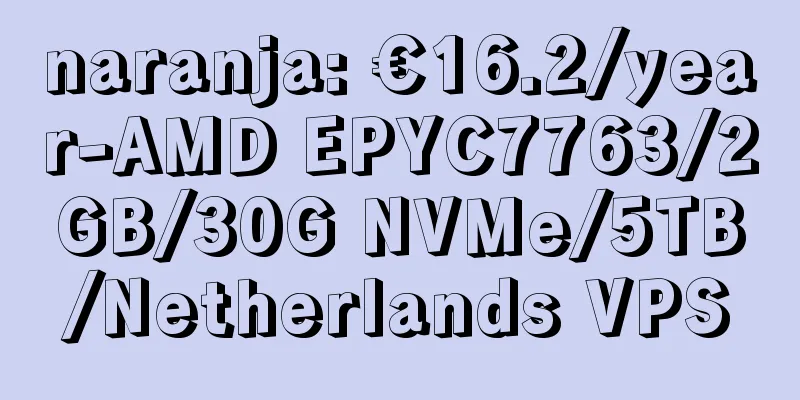Research on scenario-based interoperability strategy based on 5G perception inflection point

|
Author: Han Binjie and Lu Dan, unit: Hebei Mobile Labs GuideImproving 5G traffic splitting ratio and 5G user perception is the focus of current work. 5G network is still in the early and middle stages of network construction. The actual network environment is complex, involving interference, overlapping coverage, fast fading and other scenarios. At this stage, the correlation between various network indicators and perception cannot be clearly judged. During the optimization process, the 4/5G interoperability strategy uniformly configured in the network opening phase is difficult to guarantee user perception. Therefore, the study establishes a 5G perception and network key KPI correlation determination system and a scenario-based interoperability strategy. First, the 5G user perception degradation standard is determined, and then the strong correlation indicators affecting user perception are determined through the Pearson correlation coefficient. The accuracy of the strong correlation indicators is verified through the fitting curve of big data analysis and the information such as the perception degradation inflection point is obtained. Finally, differentiated edge parameters and interoperability strategies of "one station, one case" are formulated to ensure 5G network benefits and 5G user perception. 1. Technical Solution Introduction1.1 Establish a correlation determination system between 5G perception and key network KPIsDetermine the key KPIs and degradation inflection points that affect perception through a four-step approach: Step 1: Definition of cells with poor perceived quality: Based on theoretical calculations and test experience of related services, when the uplink rate of a single 5G user is lower than 1Mbps, the user's experience of some applications will be significantly degraded. Based on the 5G service prediction model, the downlink edge rate is recommended to be above 100Mbps, and the downlink service also requires uplink ACK feedback. If a 1080p live broadcast service is supported, the uplink rate needs to be 3~5Mbps. Since there are not many uplink high-definition live broadcast services at present, the uplink can focus on ensuring the ACK requirement of 100Mbps for the downlink. Corresponding to this standard, the uplink requires at least 1Mbps. Step 2: Determine the key factors affecting user perception: The key indicators that currently affect perception are determined through the Pearson correlation algorithm: uplink PUSCH RSRP (coverage category), uplink average interference (quality category), and 5->4 interoperation times per user (quality category). From the three dimensions of network coverage, quality, and capacity, we used the Pearson correlation coefficient to conduct a linkage analysis between uplink perception and key KPIs. We found that uplink PUSCH RSRP (coverage category), uplink average interference (quality category), and 5->4 interoperation times per user (quality category) have a significant impact on uplink perception and need to be optimized. Note: At this stage, capacity KPIs are not a key factor affecting perception. ❖Pearson correlation coefficient: It measures the degree of correlation between two random variables. The result is a value between -1 and 1. When the linear relationship between the two variables increases, the correlation coefficient tends to 1 or -1. Step 3: Confirm the inflection points of each indicator that affects perception: Use big data analysis to fit the curve to verify the accuracy of strongly correlated indicators and confirm the inflection points. ①5G uplink PUSCH RSRP (uplink coverage) analysis confirms that the perception inflection point of uplink PUSCH RSRP is -119dBm through correlation analysis. After the degradation inflection point, the proportion of poor quality cells is 70.32%, which is higher than the non-poor quality 47.35%. Therefore, it can be judged that 5G uplink PUSCH RSRP is one of the key factors affecting the perception coverage category. ②5G uplink interference level analysis confirms the calculation. Through correlation analysis, it can be determined that the perceived inflection point of the 5G uplink interference level is less than -111. After the degradation inflection point, the proportion of poor quality cells is 77.73%, which is higher than the non-poor quality 63.15%. Therefore, it is judged that the 5G uplink average interference is one of the key factors affecting the perceived quality. 1.2 Fit the differentiated uplink rate (perception) curve of each cell, determine the RSRP value corresponding to the perception inflection point, and formulate a one-site one-case interoperability strategyThe traditional way to evaluate the uplink perception inflection point mainly relies on road testing. When evaluating the uplink edge rate, the downlink RSRP threshold is used as the 5-4 interoperability threshold. However, the existing wireless environment is complex, and the interoperability threshold should not be a one-size-fits-all approach. Due to limited testing resources such as manpower and equipment, it is impossible to traverse all cells for testing. In addition, most users are indoors, and outdoor road testing cannot evaluate the actual experience of indoor users. To solve the above problems, this project uses 1Mbps uplink as the experience threshold standard, associates and fits the massive downlink RSRP of the cell with the uplink perceived rate samples, and then obtains the fitting trend curve of downlink RSRP and uplink perceived rate. Then, the RSRP value corresponding to the 1Mbps threshold of the trend curve is evaluated as the interoperability threshold of one station in the cell. The following figure is taken as an example: Figure 1 Example of interoperability threshold for “one site one case” cell fitting curve 1.3 “3D 4-Domain” edge perception parameters and characteristics to improve edge perceptionThrough three-dimensional optimization of demodulation, interference suppression and strong coordination, the edge parameters are tapped: Filtering rules:
Effect verification: 23 cells were selected for parameter verification, and the uplink user experience rate increased from 0.63Mbps to 0.7Mbps, an increase of 11.11%. 2Technological innovationsInnovation 1: Three-step method to build a model for associating uplink perception with network KPIs The key network KPIs are associated with the uplink experience big data. From the three dimensions of network coverage, quality, and capacity, the Pearson correlation coefficient is used to conduct linkage analysis between uplink perception and key KPIs. It is found that indicators such as uplink PUSCH RSRP (coverage category), uplink average interference (quality category), and the number of 5->4 interoperations per user (quality category) have a greater impact on uplink perception and need to be optimized. Note: At this stage, capacity KPIs are not key factors affecting perception. The accuracy of the strong correlation between 5G uplink PUSCH RSRP, uplink interference and perception is verified through fitting curves, and the KPI inflection points that affect perception are confirmed. Innovation 2: Determine the RSRP threshold corresponding to the uplink perception inflection point based on MR big data and formulate a one-station-one-case interoperability strategy Traditionally, the evaluation of uplink perception inflection points mainly relies on road testing. When evaluating the uplink edge rate, the downlink RSRP threshold is used as the 5-4 interoperability threshold. However, the existing network environment is complex, and the threshold should not be one-size-fits-all. Due to limited resources, it is impossible to traverse all cells for testing. In addition, most users are indoors, and outdoor road testing cannot evaluate the real experience of indoor users. Based on this, this project proposes to conduct uplink perception inflection point threshold evaluation based on MR data, associate user downlink RSRP and uplink experience rate samples through a line graph, and automatically perform two-dimensional curve fitting; obtain the differentiated "one station one case" uplink edge perception inflection point of each cell. Innovation 3: Improvement of edge perception parameters of “three-dimensional four-domain” This project proposes 14 key parameters in four major channel domains, including PDCCH/PUCCH/PUSCH/SSB, by developing three-dimensional optimization ideas of demodulation, interference suppression, and strong coordination to comprehensively improve uplink edge perception. |
<<: Cloud Gateway for Home Computing Networks
Recommend
RAKsmart: US servers start from $20/month for the first month, Japan/Korea servers start from $59/month, cluster servers start from $109/month
RAKsmart is carrying out the "New Year's...
Three steps to protect your home network
Today, the typical structure of an internet conne...
LiCloud: $34.99/month - E3-1230v2, 8G memory, 240G SSD or 1TB HDD, 30M Hong Kong server
LiCloud.io has released a promotion for June. Com...
Denodo announces product launch in China through AWS Marketplace
Beijing, June 8, 2021 - Denodo, a leader in data ...
The Difference Between a Network Hub and a Network Switch
What is a Network Hub? A hub in a computer networ...
Vice President of Huawei Cloud BU: We want to be the promoter of enterprise digital transformation
[51CTO.com original article] When it comes to pub...
A brief analysis of the importance of service gateways to enterprise core application architecture
[[421049]] This article is reprinted from the WeC...
Double 11 Carnival, drink this bowl of "traffic control" soup
[[350322]] As the Double 11 shopping festival app...
Akamai Releases 2021 Annual Sustainability Report
March 14, 2022 - Akamai Technologies, Inc. (Akama...
Three major operators: New York Stock Exchange maintains delisting decision
On the evening of May 7, the three major operator...
Tribute to hackers | Review of the exploration of memory virtualization
[[415610]] Cloud and virtualization Cloud computi...
Why is WiFi on buses not as popular as on subways?
Public transport Wi-Fi operator 16Wi-Fi recently ...
How to improve WiFi signal without changing wireless router
I believe that a considerable number of netizens ...
The latest analysis of WiFi 6E and WiFi 7 market!
WiFi has been expanding its deployment and applic...
An article giving you a first experience with Apache APISIX
Apache APISIX is a dynamic, real-time, high-perfo...









